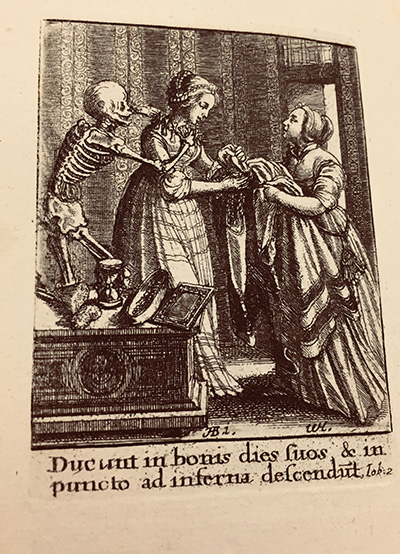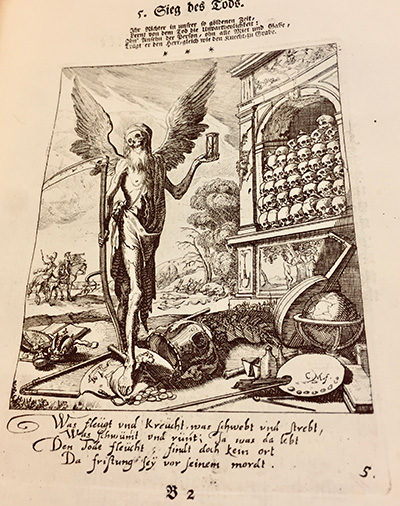Dancing with Death...and Reading, Writing, and Talking with it Too
In western cultures, there is a taboo associated with talking about death and dying, as though any utterance of death may bring it upon one’s head. Although historically, specific attitudes, beliefs, and practices around death and dying have regularly changed, the taboo itself remains. Recently, the Death Positive Movement has begun working to change public perception and erase the taboo in order to help people better prepare for the inevitable.
The Gemmell Collection in the library, is a collection of editions of the Dance of Death, which was bequeathed by the Glasgow physician and magistrate, William Gemmell (1859 – 1919). The images designed by the artist, Hans Holbein, and subsequently recreated over the years by others, portray people in all walks of life being taken by death (often represented as a skeleton).
The goal of my project has been to encourage public engagement with the images in the Gemmell Collection through creative writing responses, in the form of short writings including prose poetry, poetry, short essay, and/or flash fiction/nonfiction.

I have responded to some of these images and through in-person creative writing workshops, have encouraged others to follow my lead and see where their imaginations and interactions with the Dance with Death images might take them. All these responses will come together to create a one-time e-publication hosted on my website. The publication will also provide details on Hans Holbein, the Death Positive Movement, and other relevant information.
My hope is that through our collective creativity we can examine our feelings on mortality and come to be a little more comfortable thinking and talking about death.
Amy Shea, PhD Student in Creative Writing
As a writer and a member of the death positive community, Amy’s research aims to draw attention to death awareness for not only those who can afford to care for themselves in life and in death, but also for those in our society who are too often left behind and forgotten.
Website: www.amysshea.com
Twitter: @shea_writer
Instagram: amys1pj
Images
Top: Gemmell Collection, University of Glasgow Archives and Special Collections, SpColl_Gemmell13_pg11
Above:Gemmell Collection, University of Glasgow Archives and Special Collections, SpColl_Gemmell15_pg62


